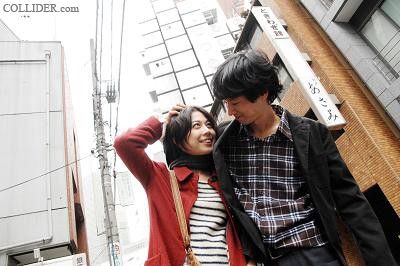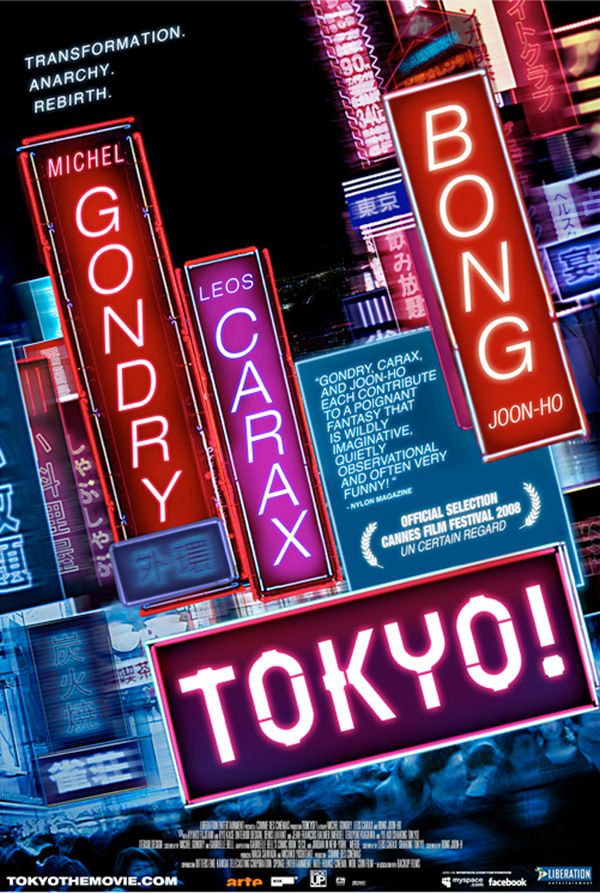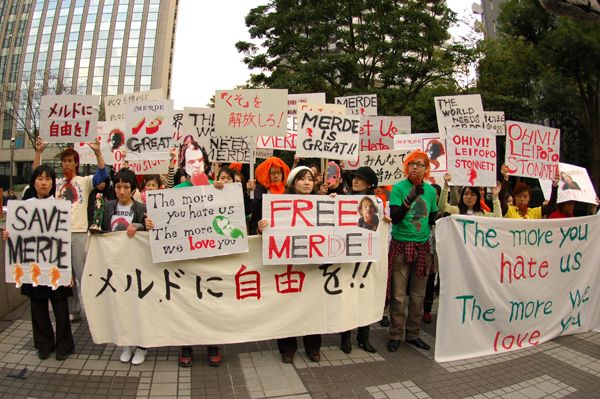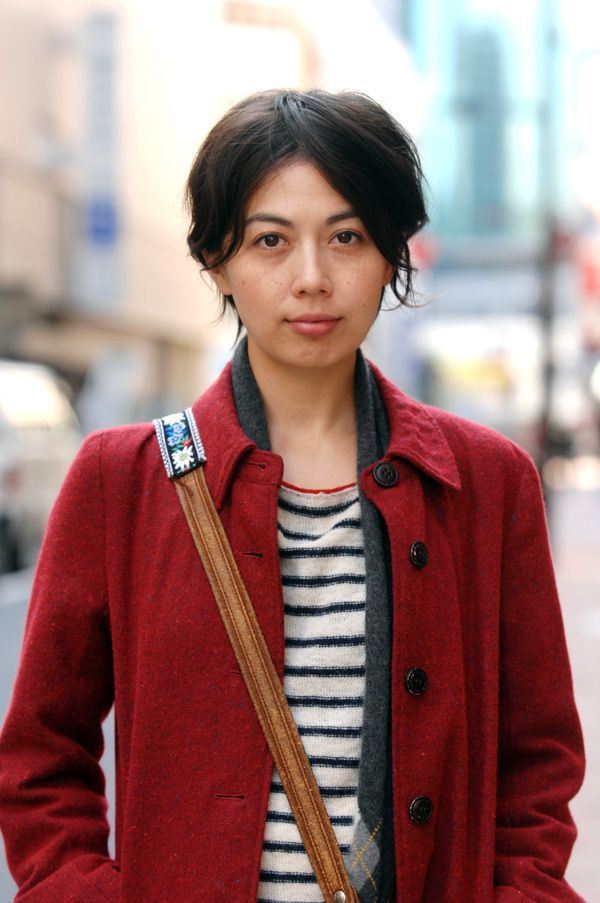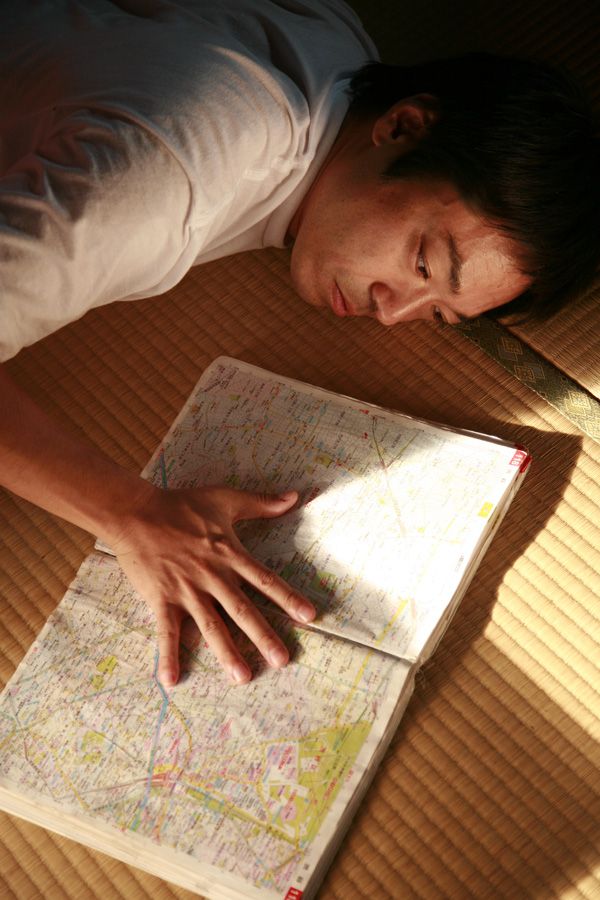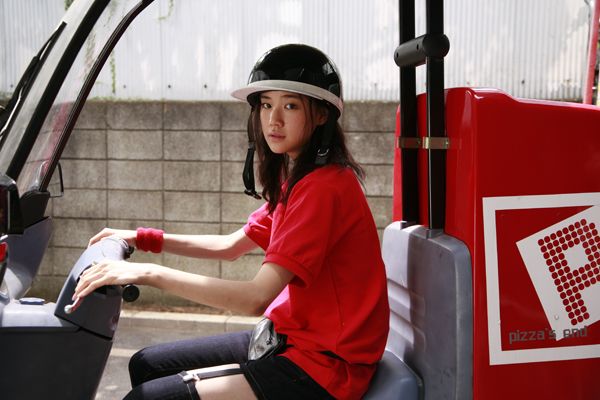Millions of people dwell in what is perhaps the world's most high-tech, dense and modern metropolis. "Tokyo!", a collection of three independent films, treats us to a fantastic and surprising journey into the hearts and minds of compelling characters in the urban environment.
This production is captivating from the opening menu screen's electric artificiality and high energy hum, setting the stage for the journey ahead. The framework is established for themes of loneliness and the struggle to connect with humanity and society. Although these themes may recur in urban societies globally, each segment in this collection is uniquely shaped by Japanese culture. Each is distinctly Tokyo. M review of the film is after the jump:
A movie is first and foremost for visual enjoyment. "Tokyo!" is fulfilling as a visual spectacle, capturing not only the eye but the mind as well, a rich experience for viewers seeking more than just the latest Hollywood formula.
"INTERIOR DESIGN"
Director - Michel Gondry
The first segment, directed by Michel Gondry, powerfully evokes the heartbreak of a young woman coming to grips with realization of who she really is. One of my favorite films of all time is another piece directed by Gondry, "The Eternal Sunshine of the Spotless Mind". Like "Sunshine", the shorter "Interior Design" progressively strips away the illusions of the protagonist and lays bare the torment of self-realization.
"Interior Design" follows the arrival in Tokyo of a young lady named Hiroko, compellingly performed by Ayako Fujitani. She comes to the city with an ambitious boyfriend, an amateur filmmaker, and her hopes of sharing with him a grand future. But, the grim realities of life soon reveal the illusions she has harbored, especially about herself.
I was particularly struck by subtle cultural commentary within the film, especially a scene in which Hiroki first begins fighting with her boyfriend, Akira. As they argue on the street, my eye is drawn to the background. Women in traditional kimono perform ancient, traditional rituals of the morning, sweeping the street and symbolically cleaning it, with archaic wooden buckets and implements. Racing around them are men and women in modern business attire, urgently en route to their jobs, driven by their ambitions. Gondry's mastery of mise en scene expresses the roles of the two individuals arguing. Ultimately, Hiroko struggles with her traditional role as a Japanese woman - not as an ambitious go-getter but as a support for her man.
As viewers, we are treated to some real surprises in Hiroko's transformation as Gondry's team displays mastery of the film-making craft.
"MERDE"
Director - Leos Carax
A modern-day monster movie brings forth (yet again) a creature from the deep to destroy Tokyo! This creature is not as big as Godzilla but he is far more entertaining. He is a creation of pollution, of hate, of suppressed racism and nationalism, antithesis to the clean and orderly civilization that is the facade of Tokyo society. He is raw impulse, unrestrained appetite and disrespect for others. He takes what he wants and destroys what he despises. And he has a curly red beard.
"Merde" is French for "shit". And, sure enough, shit happens. He is a foreigner in Tokyo who, because of differences, despises the Japanese and wants to kill them. Bizarre comedy ensues.
Layers and subtleties abound in this social commentary. It reflects on Japanese nationalism and racism as well as that of foreigners visiting Japanese society. Is this really a critique of the vulgarity of the foreigner as seen by the Japanese or the strangeness of the Japanese to the visiting foreigner? The French director is well suited to exposition of this cultural conflict.
I could not help laughing aloud at many homages in this production. Occasional inserts of the Godzilla roar as well as clever echoes of the monster movie newscasts were a humorous twist. My favorite scene was the emergence of the creature and his mad rampage down an orderly and upscale downtown street, wreaking havoc. Adding to my appreciation, we find in the "making of" special features that this was guerrilla filmmaking, without a permit, that had to be orchestrated perfectly on the first take. Kudos to Carax!
I will end with a final thought that challenges my limited cultural understanding - but I will take a shot at it. The creature states, in a profound moment, "The sky has grown old." Reaching out to the collective knowledge of the Web, I find a quote from an ancient Chinese poet, Li He: "The sky is always the same, the sun rises in the morning and sets in the evening, and it will never age. If the sky knows love and has love, it will also grow old just like a human being." This creature, destroying the artificial uniformity and conformity of daily life in the city, has forced its residents to acknowledge what lies beneath the social facade - their own human impulses. Through knowing oneself, one can love oneself.
"SHAKING TOKYO"
Director - Bong Joon-ho
Focusing on a recurring theme in Asian independent films, "Shaking Tokyo" explores human isolation fostered by the urban environment. The Man, played by Teruyuki Kagawa, is a hikikomori - a shut-in. Driven by his fear of personal exposure, exacerbated by Japanese cultural traditions imposing barriers to interpersonal contact, The Man has reclused himself entirely from society, not venturing from his home in many years.
"Shaking Tokyo" is masterfully directed and performed with compelling use of time and space as well as subtleties of expression. The viewer can feel the palpable loneliness of The Man and is drawn into his sense of astonishment as his carefully ordered world is disrupted by a lovely pizza-delivery girl.
A humorous interlude is provided by the arrival of the pizza girl's boss, veteran actor Naoto Takenaka, whose antics in "Shall We Dance?" are unforgettable. In his own inimitable style, Takenaka comically takes control of the scene and utterly wrecks any sense of order and decorum.
The urban Japanese tendency towards perfectionism, towards order and control over one's environment, is challenged by The Man's uncontrollable attraction to the young lady. It is literally an earth-shaking event in his life, drawing him out of his comfortable cocoon to risk all, to batter down cultural taboos and literally touch another human being.
SPECIAL FEATURES
DVD features include...
Director Interviews
Interviews are somewhat informative, providing insights into the process of concept development and the director's vision. Bong Joon-ho is most easily understood, articulate in his reasons as well as the overall theme of his film. Carax is a fellow I would not want to sit down to lunch with as it would seem he pours all his personality into his movies leaving none for himself. But perhaps he was just feeling serious for that interview.
Making Of
I never get tired of watching making-of segments when they reveal the processes of filmmaking as well as anecdotal experiences in production. This DVD does not disappoint. We are treated to many behind the scenes looks at the craft of compelling illusion. I got a real laugh watching the "guerrilla" shot of the monster's emergence in "Merde". A crew towing the cameraman down the sidewalk in a wheel-chair plus the crazy action - it was a great payoff after the rather boring rehearsal footage. For the aspiring independent film-maker or even the mildly curious, these making-of scenes are rewarding.
I do have a peeve with Gondry. He excluded the making of an amazing FX sequence in his piece. He insisted we should be left to figure out how it was done. Darnit!
THE FINAL SCORE
Overall, I rate this DVD, "Tokyo!", a solid five out of five stars for achievement in its genre.


